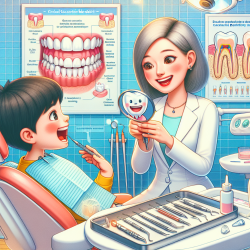Introduction
In the digital age, personal listening devices (PLDs) have become an integral part of our daily lives, especially for college students. However, the convenience of these devices comes with a hidden risk: potential hearing loss. A recent study titled "Use of Personal Listening Devices and Knowledge/Attitude for Greater Hearing Conservation in College Students: Data Analysis and Regression Model Based on 1009 Respondents" sheds light on this issue, providing valuable insights for practitioners in the field of speech language pathology and audiology.
The Study: Key Findings
The study analyzed responses from 1009 Korean college students, focusing on their use of PLDs and their knowledge and attitudes toward hearing conservation. The findings reveal a concerning trend: while most students are aware of the risks associated with loud noise exposure, many still engage in risky listening behaviors.
- Approximately 76.1% of respondents rated their hearing as good, yet many reported using PLDs at high volumes in noisy environments.
- Despite understanding the signs of hearing loss, such as tinnitus and the need to increase TV volume, students often do not take preventive measures.
- The regression model indicates that self-reported hearing deficits are more strongly associated with volume levels rather than the frequency of PLD use.
Implications for Practitioners
For practitioners, these findings highlight the importance of targeted education and intervention strategies. Here are some actionable steps:
- Educational Outreach: Develop programs that emphasize the importance of safe listening practices, particularly focusing on volume control.
- Awareness Campaigns: Utilize various media channels to reach students and raise awareness about the risks of high-volume listening.
- Personalized Counseling: Offer personalized advice and hearing assessments to students, encouraging them to adopt safer listening habits.
Encouraging Further Research
The study opens the door for further research into the cultural and behavioral factors influencing PLD use among different demographics. Understanding these nuances can help tailor more effective interventions.
Conclusion
As practitioners dedicated to improving children's outcomes, it's crucial to address the potential hearing risks posed by PLDs. By leveraging data-driven insights and fostering a culture of hearing conservation, we can protect the auditory health of future generations.
To read the original research paper, please follow this link: Use of Personal Listening Devices and Knowledge/Attitude for Greater Hearing Conservation in College Students: Data Analysis and Regression Model Based on 1009 Respondents.










